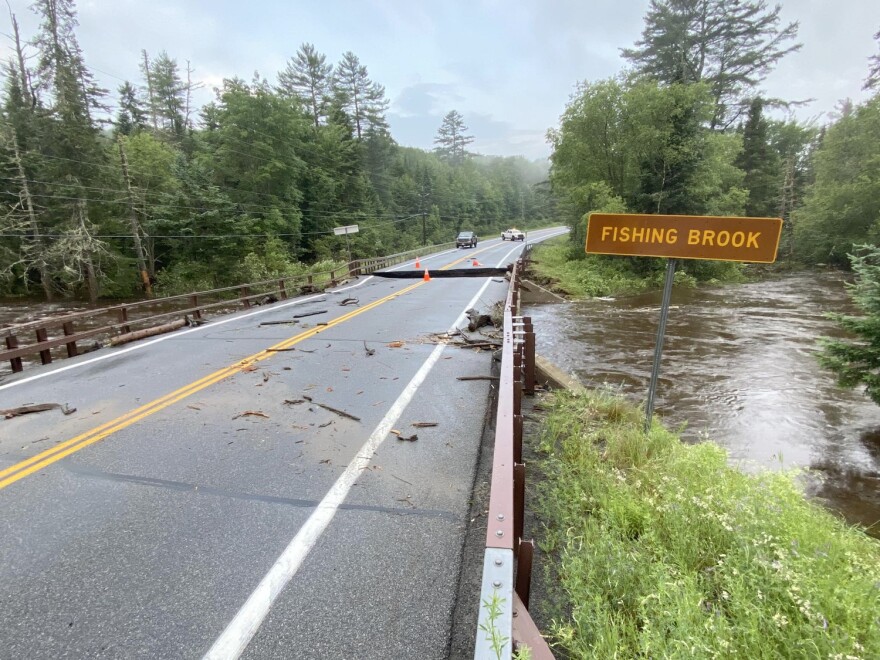Heavy rains led to deadly flooding in parts of New York, Vermont and Pennsylvania. New York's Southern Tier was not hit by this system, but does have a history of flooding. Brent Fox spoke with meteorologist David Nicosia from the National Weather Service in Binghamton.
Brent Fox: David, how bad has flooding been in the Northeast so far this year?
David Nicosia: It's been a really tough year. And we've got a lot of flooding. Mainly east and north of us. And also there was that flood event in southeast Pennsylvania. But fortunately for the Binghamton area, we've been lucky, it's actually been, it has not really impacted us. We've had our share. And I hate to see it happen to anybody. But I'm just glad it didn't happen here. Because we're no stranger to what's been going on in other parts of the Northeast.

BF: And what would you say make certain areas more prone to flooding?
DN: Well, terrain is one. Urbanization is another one, where we have a lot of pavement. Pavement is impervious. So when you get a lot of heavy rain, if the drainage is not right, or the drainage is just poor, what happens is you're flooding. But around our area, it's really our terrain, our soils. Our soils are, there's a lot of clay, a lot of rock. So our soils tend to saturate really quickly here and we have terrain. Also, we have some major river systems moving through the area too, as well. So this area is very primed for, very vulnerable to flooding.

BF: Why can floodwaters be so dangerous?
DN: Well, the power of water, people just underestimate water. And 6 to 10 inches of water rapidly flowing can take your car away. I think it's just people just underestimate. And that's how most people die in floods, by the way, is in their vehicles. They just get swept away, they just think that they could drive across this flooded roadway and they end up floating. We've lost a lot of people that way in the United States, and actually across the world.
If you have six inches of rapidly flowing water is not like six inches of snow. Okay, you got a four-wheel-drive vehicle, yes, six inches of snow, I can handle that. You got six inches of fast moving water, if your car doesn't have the clearance, you're gonna start floating. Basically, the clearance, even a truck, you got a foot of water that's rapidly flowing and if your truck doesn't have 12 inches, let's say your truck has nine inches of clearance, you're gonna start floating and once you float, it doesn't matter if you have a four-wheel drive or whatever, it doesn't matter.
I think people underestimate that and also another thing that happens is sometimes you have this area flooded and waters racing across the road and the road is undermined and you can't see it. So people drive right in but there they go right down into the stream or creek and unfortunately many people die that way.

BF: And what ways would you say people could prepare in the event of a flood?
DN: Well, the most important thing obviously is don't drive through flooded areas. I mean, that's one way it's pretty easy to avoid and we keep saying this and we just hope people listen to us. The other way is if you are in the floods know where you are, like know your risk. Like if you live in the floodplain I mean, if you're protected by a levee that's good, but you got to know what the forecasts are. Knowing what the river forecasts are.
So you go to our website. We have all the river projections. Another thing is just kind of a plan. Let's say you live near a stream or a creek that floods and you just start getting lots of heavy rain and flash flood warning. You should be able to evacuate quickly so have a to-go bag which has all the essentials: medications, food, clothing, anything you need, just have it ready to go in case. Especially if you live in a very flash-flood-prone area like Choconut Creek, Nanticoke Creek and we've got a lot of creeks and streams in this area that just can explode with heavy rain.
So we get flash flood warnings. We get very heavy rain so you should monitor these situations. You shouldn't just say "Ah, it's not going to happen to me," because it can happen. We've seen it happen many times here unfortunately. So, have a to-go bag and just get to higher ground. You don't want to be surrounded by water and worried about being rescued.


